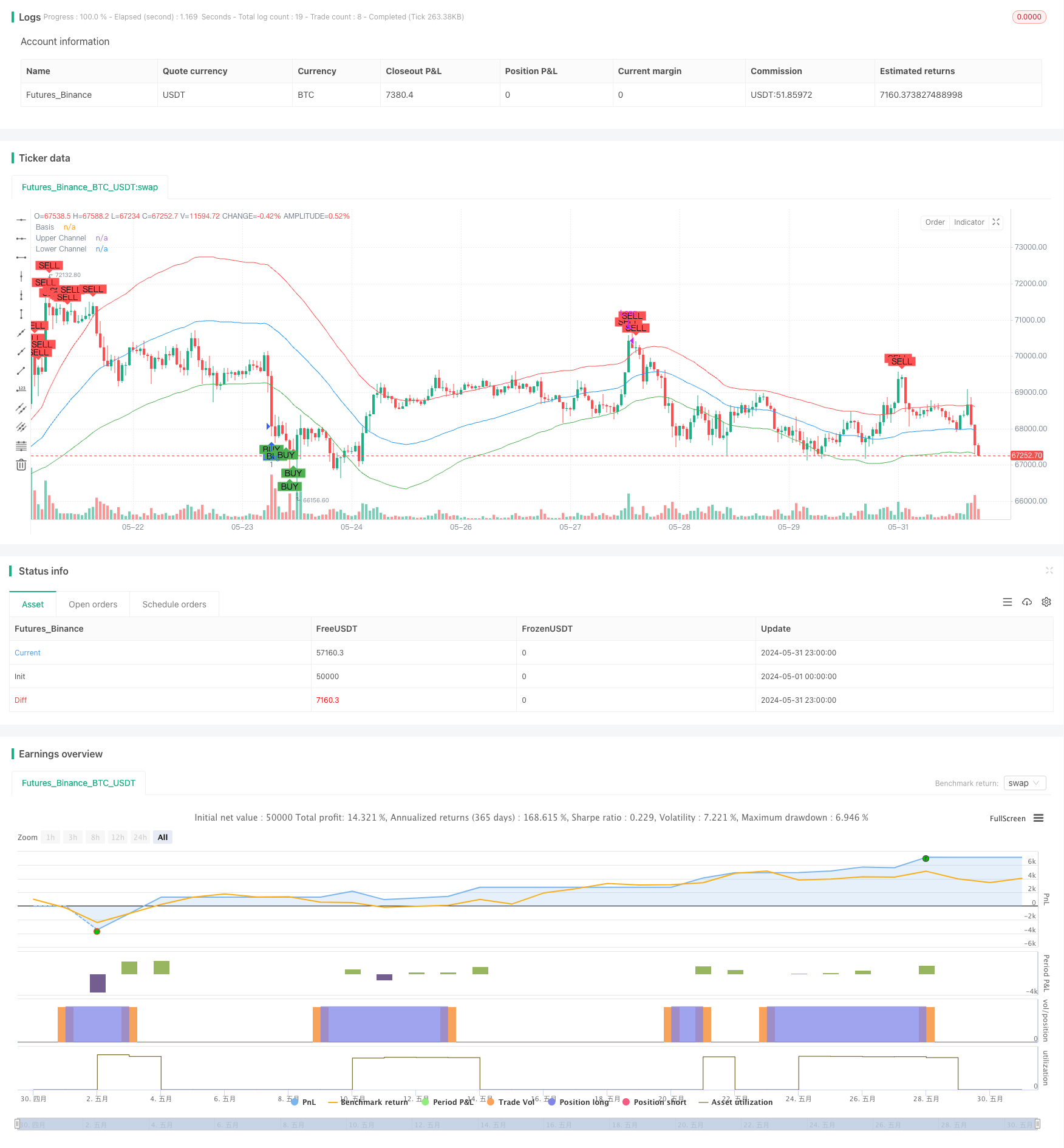
概述
该策略结合了相对强弱指数(RSI)和线性回归通道(LRC)两个技术指标,旨在捕捉市场的超买和超卖机会。当价格触及线性回归通道的下轨,且RSI指标低于30时,策略会发出买入信号;当价格触及线性回归通道的上轨,且RSI指标高于70时,策略会发出卖出信号。这种结合RSI和LRC的方法可以有效地识别潜在的交易机会,同时降低假信号的可能性。
策略原理
该策略的核心是RSI指标和线性回归通道。RSI是一个动量指标,用于衡量最近价格变化的幅度和方向。当RSI低于30时,市场被认为处于超卖状态;当RSI高于70时,市场被认为处于超买状态。线性回归通道是一种趋势跟踪指标,由一条基准线和两条平行线(上通道和下通道)组成。基准线是收盘价的线性回归,而上下通道线是基准线加减一定的标准差。当价格触及下通道线时,市场可能处于超卖状态并可能反弹;当价格触及上通道线时,市场可能处于超买状态并可能回落。通过结合RSI和LRC,该策略试图确认潜在的交易信号,以提高交易的成功率。
策略优势
- 结合了动量指标(RSI)和趋势跟踪指标(LRC),提供了更全面的市场分析。
- 通过等待价格触及线性回归通道的上下轨,并确认RSI的超买超卖状态,策略可以过滤掉一些假信号。
- 策略逻辑清晰,易于理解和实现。
- 可以应用于不同的时间框架,如日线和4小时线,具有一定的灵活性。
策略风险
- 在震荡市场或趋势不明朗时,该策略可能会产生较多的假信号。
- RSI和LRC的参数选择可能会影响策略的表现,不恰当的参数设置可能导致策略失效。
- 该策略没有考虑风险管理,如止损和仓位管理,这可能导致大的回撤。
- 策略的表现可能因市场状况的变化而有所不同,在某些市场环境下可能表现不佳。
策略优化方向
- 引入更多的技术指标或市场情绪指标,以提高信号的可靠性。
- 优化RSI和LRC的参数设置,以适应不同的市场状况和交易品种。
- 引入风险管理措施,如止损和动态仓位管理,以控制潜在的损失。
- 考虑加入趋势过滤器,以避免在震荡市场中交易。
- 对策略进行回测和优化,以确定最佳的参数组合和交易规则。
总结
RSI与线性回归通道交易策略通过结合动量指标和趋势跟踪指标,试图捕捉市场的超买超卖机会。该策略的优势在于逻辑清晰,易于实现,并且可以应用于不同的时间框架。然而,策略也存在一些风险,如假信号、参数敏感性和缺乏风险管理等。为了提高策略的表现,可以考虑引入更多的指标、优化参数设置、加入风险管理措施和趋势过滤器等。总的来说,该策略提供了一个基于RSI和LRC的交易框架,但仍需要进一步的优化和完善。
策略源码
/*backtest
start: 2024-05-01 00:00:00
end: 2024-05-31 23:59:59
period: 1h
basePeriod: 15m
exchanges: [{"eid":"Futures_Binance","currency":"BTC_USDT"}]
*/
//@version=5
strategy("RSI and Linear Regression Channel Strategy", overlay=true)
// Define input parameters
rsiLength = input(14, title="RSI Length")
channelLength = input(100, title="Linear Regression Channel Length")
rsiBuyThreshold = 30
rsiSellThreshold = 70
// Calculate RSI
rsi = ta.rsi(close, rsiLength)
// Calculate Linear Regression Channel
basis = ta.linreg(close, channelLength, 0)
dev = ta.stdev(close, channelLength)
upperChannel = basis + dev
lowerChannel = basis - dev
// Plot Linear Regression Channel
plot(basis, color=color.blue, title="Basis")
plot(upperChannel, color=color.red, title="Upper Channel")
plot(lowerChannel, color=color.green, title="Lower Channel")
// Entry condition: Price touches lower channel and RSI crosses below buy threshold
longCondition = (close <= lowerChannel) and (rsi < rsiBuyThreshold)
// Exit condition: Price touches upper channel and RSI crosses above sell threshold
shortCondition = (close >= upperChannel) and (rsi > rsiSellThreshold)
// Strategy execution
if (longCondition)
strategy.entry("Long", strategy.long)
if (shortCondition)
strategy.close("Long")
// Plot buy/sell signals on the chart
plotshape(series=longCondition, location=location.belowbar, color=color.green, style=shape.labelup, text="BUY")
plotshape(series=shortCondition, location=location.abovebar, color=color.red, style=shape.labeldown, text="SELL")
相关推荐